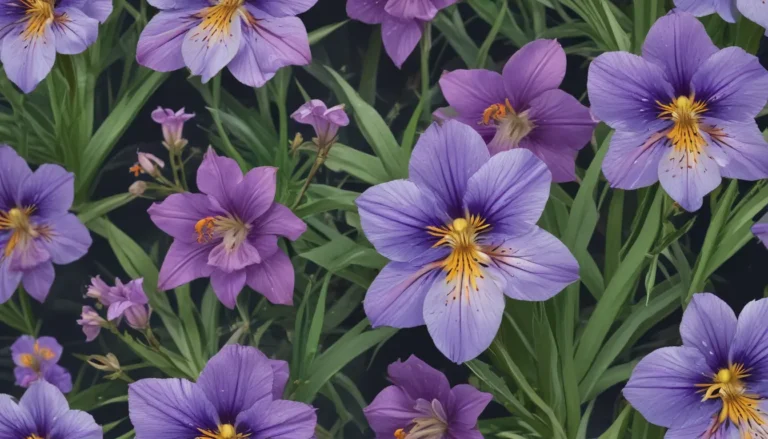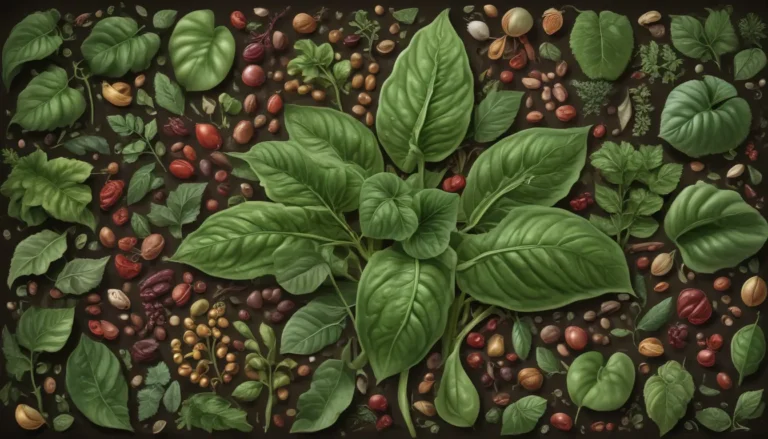The pictures we use in our articles might not show exactly what the words say. We choose these pictures to make you interested in reading more. The pictures work together with the words but don’t take their place. The words still tell you the important facts.
Welcome to the enchanting world of the Texas Bluebonnet, a vibrant symbol of resilience and cultural significance in the Lone Star State. These iconic wildflowers captivate hearts with their stunning blue hues and delicate petals, but there is so much more to discover about them. Join us as we unravel 11 enigmatic facts about the Texas Bluebonnet that will leave you fascinated and eager to learn more. From their historical roots to their unique adaptations, let's embark on a journey through the captivating world of these beloved blooms.
The Texas Bluebonnet: A State Treasure
The Texas Bluebonnet, scientifically known as Lupinus texensis, proudly holds the title of the official state flower of Texas. This vibrant wildflower is deeply intertwined with the history and culture of the Lone Star State, symbolizing beauty, resilience, and the pioneering spirit of Texans.
Blooming Beauty of the Bluebonnet
During the spring months, from March to May, the Texas Bluebonnet graces the Texan landscape with its magnificent blooms. These beautiful blue flowers, available in shades of white, pink, and maroon as well, create a picturesque scene across meadows, fields, and highways throughout Texas.
The Lupine Legacy
Belonging to the Lupinus genus, the Texas Bluebonnet is a type of wild lupine known for its intricate flowers. With unique fan-like petals arranged in a distinct pattern, these wildflowers add a touch of elegance to their surroundings.
Symbiotic Harmony of Nature
The roots of the Texas Bluebonnet house nitrogen-fixing bacteria in nodules, forming a symbiotic relationship that benefits the plant and the surrounding soil. This unique adaptation allows the plant to thrive and enhance its growth while supporting other plants in the area.
Buzzing with Life
The vibrant flowers of the Texas Bluebonnet attract bees and butterflies, key pollinators essential for the plant's reproduction. These insects add a lively and dynamic element to the blooming fields, creating a harmonious ecosystem in the midst of nature's beauty.
Resilient Spirit of the Bluebonnet
Native to Texas, the Bluebonnet is a hardy wildflower that thrives in harsh conditions, including drought and cold temperatures. This resilience makes it a symbol of endurance and strength, reflecting the spirit of the Texan people.
Cultural Heritage in Bloom
With its deep cultural significance, the Texas Bluebonnet is cherished by Texans as a symbol of pride and tradition. It represents qualities like resilience, beauty, and the enduring spirit of the state's history and heritage.
Preserving Nature’s Beauty
It is illegal to pick or disturb Texas Bluebonnets on public land to protect and conserve these iconic wildflowers. This law ensures that future generations can continue to enjoy the beauty and significance of the Texas Bluebonnet for years to come.
Capturing Memories Among the Bluebonnets
During the blooming season, it is a beloved tradition for Texans to take photos among the vast fields of Bluebonnets. Families, couples, and individuals flock to these scenic locations to capture cherished memories and celebrate the beauty of nature.
Texas Bluebonnet Festival: A Celebration of Beauty
Every year, the town of Burnet in Texas hosts the Bluebonnet Festival, a joyous celebration of the blooming Texas Bluebonnets. This event attracts visitors from near and far, offering a range of activities and festivities to honor these iconic wildflowers.
Conclusion: Embracing the Magic of Bluebonnets
In conclusion, Texas Bluebonnets are a true wonder of nature, captivating hearts with their beauty and resilience. Whether you're a nature enthusiast or simply love floral displays, exploring the world of Texas Bluebonnets is sure to leave you in awe of their charm and significance. So, next time you find yourself in the Lone Star State during springtime, take a moment to admire the breathtaking Texas Bluebonnets and revel in the magic they bring to the countryside.
FAQs: Unveiling More About Bluebonnets
- Are Texas Bluebonnets endangered?
-
No, Texas Bluebonnets are not considered endangered, but efforts are made to preserve their habitats and promote their growth.
-
Do Texas Bluebonnets only grow in Texas?
-
While Texas is famous for its Bluebonnets, they can also be found in other parts of the United States, such as Oklahoma, Louisiana, and even as far as the Mexican border.
-
When is the best time to see Texas Bluebonnets in bloom?
-
The peak bloom period for Texas Bluebonnets is typically from late March to early May, varying based on weather conditions.
-
Are Texas Bluebonnets easy to grow in a garden?
-
Texas Bluebonnets can be challenging to cultivate in a garden due to specific soil and sunlight requirements. Consulting a local horticulturist is recommended for successful growth.
-
Can I pick Texas Bluebonnets?
- It is discouraged to pick Texas Bluebonnets in the wild to preserve their ecological role and beauty. Enjoy them in their natural habitat and capture their charm through photography.
Whether you're a Texan admiring your state flower or a visitor intrigued by the allure of the Texas Bluebonnet, these enigmatic facts offer a glimpse into the captivating world of wildflowers. Embrace the beauty of nature and the rich heritage of Texas as you explore the charm and significance of the iconic Bluebonnet. Travel through picturesque fields, capture cherished memories, and revel in the magic of spring blooms that define the essence of the Lone Star State.






